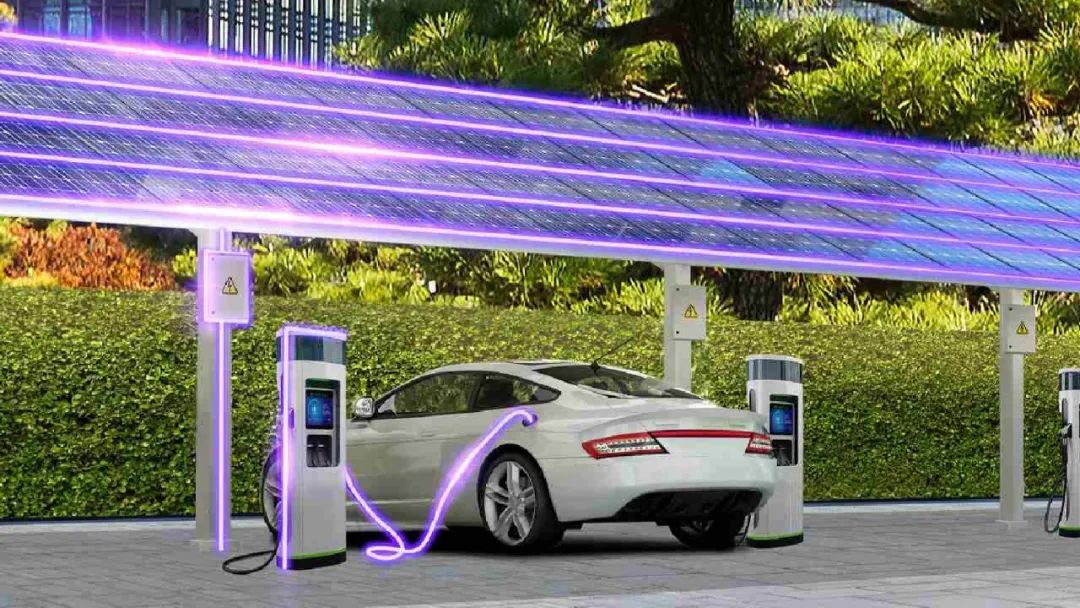In modern society, our daily lives are deeply dependent on the power grid, which must be continuously monitored and carefully maintained toensure the reliability of the power supply. As more and more users transition from non-renewable to renewable energy sources, the daily supply and demand of the power grid are constantly changing, and we must respond to changing needs.

Isolated current sensing, which is usually Hall-based or shunt-based sensing, can safely and accurately measure the current provided to or drawn from the grid, thereby helping to manage the grid. For example, in electric vehicle (EV) charging systems and solar systems, isolation is necessary to protect low-voltage circuit controls from high-voltage transients.
The figure below shows current sensing in electric vehicle charging and solar applications. In these applications, current sensing also plays an important role in the efficiency, metering, and control of power gates. This article will discuss how to provide accurate and safe current sensing in electric vehicle chargers and solar systems.
Current Examples in Electric Vehicle Charging and Solar Applications
1. Efficiency and Power Conversion in Electric Vehicle Charging and Solar Applications
Both DC fast chargers and PV inverters use similar primary power conversion building blocks. DC fast chargers convert AC power from the grid to DC power in order to charge the battery of an electric vehicle. Solar panels convert DC power to AC power, connect to the grid, and deliver power to the grid.
In electric vehicle charging, a basic DC fast charger is connected to the "point of common coupling" in the grid. An EMI filter follows the point of common coupling to prevent noise from subsequent power factor correction stages from coupling back to the grid, thereby maintaining measurement accuracy. This accuracy helps improve the efficiency of the AC/DC conversion.
Solar panels are connected to the grid in a similar manner to electric vehicle chargers. The DC voltage generated by solar panels fluctuates depending on the panel's exposure to sunlight and the amount of UV light received by the panel. The PV inverter then converts the DC power to AC power, which can be coupled back to the AC grid at the point of common coupling. To match the output power of the PV inverter to the grid, the isolated current measurement at this location must be accurate.
2. Metering
For accurate metering and billing, current must be measured accurately. At the point of common coupling, the metering system can use current sensing to track the energy consumed by the DC fast charger. Tracking the health of the DC fast charger helps determine maintenance needs and correctly bill the end user.
The metering standard for solar panels will monitor the point of common coupling to connect renewable energy back to the grid. In order to track small changes in current consumption over time, high accuracy needs to be maintained throughout the life cycle, so designers often prefer to use shunt-based isolated current sensors (such as AMC131M03) because the accuracy of open-loop technology may drift over time, while shunt-based current sensors will not drift in accuracy over the entire life cycle. Shunt-based current sensing technology helps prevent performance degradation over the life cycle of the system.
3. Accurate control of power gates
Hall-based current sensing is another form of isolated current sensing. Hall-based current sensing can detect current used in the power conversion stage to control the precise switching operation of the power gate. In the power conversion stage, the generally acceptable accuracy is 10 bits because the current amplitude is large and there is no need to maintain accuracy over the entire range. Therefore, Hall-based technologies such as the TMCS1126 current sensor are popular due to their ease of use and low cost.
At the output of a DC fast charger, the connection to the vehicle often features shunt-based current measurement. To ensure safe charging of the vehicle battery, high accuracy is a priority. Alternatively, at the input of a photovoltaic inverter, the AMC3302 isolated amplifier is often used in quality power point transfer algorithms for accurate shunt-based current sensing to achieve maximum power output.
4. Conclusion
Current sensing will provide important protection, not only to promote the future development of renewable energy, but also to enable the correct and safe management of the grid. With the rise of electric vehicles and renewable energy, investments in DC fast charging stations and solar panels have also increased. In electric vehicle charging and solar applications, shunt-based and Hall-based isolated current sensing are essential to ensure safe and efficient operation.

